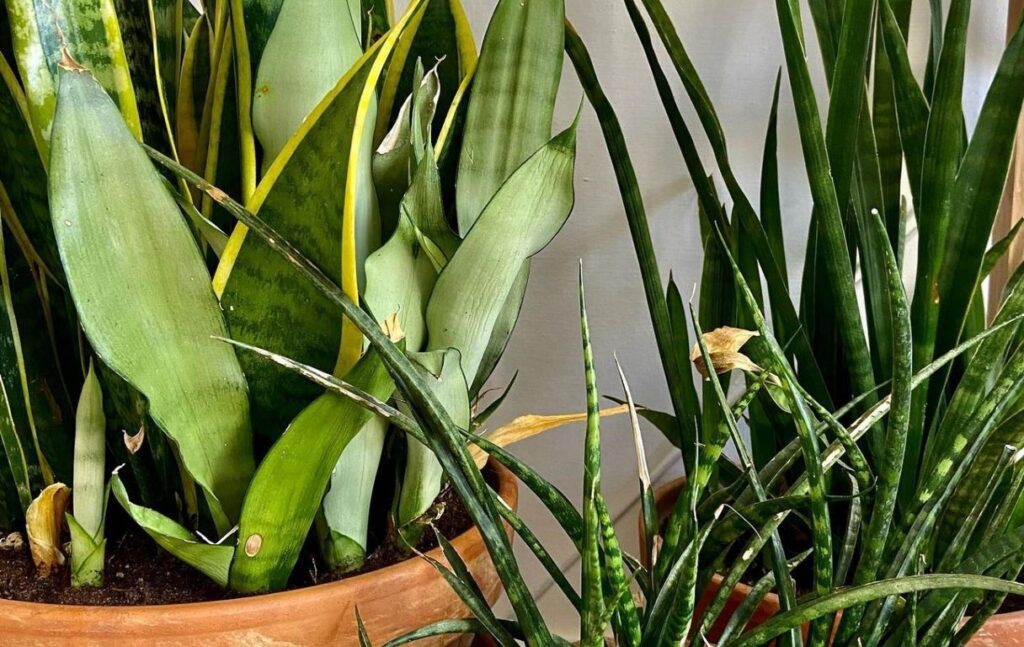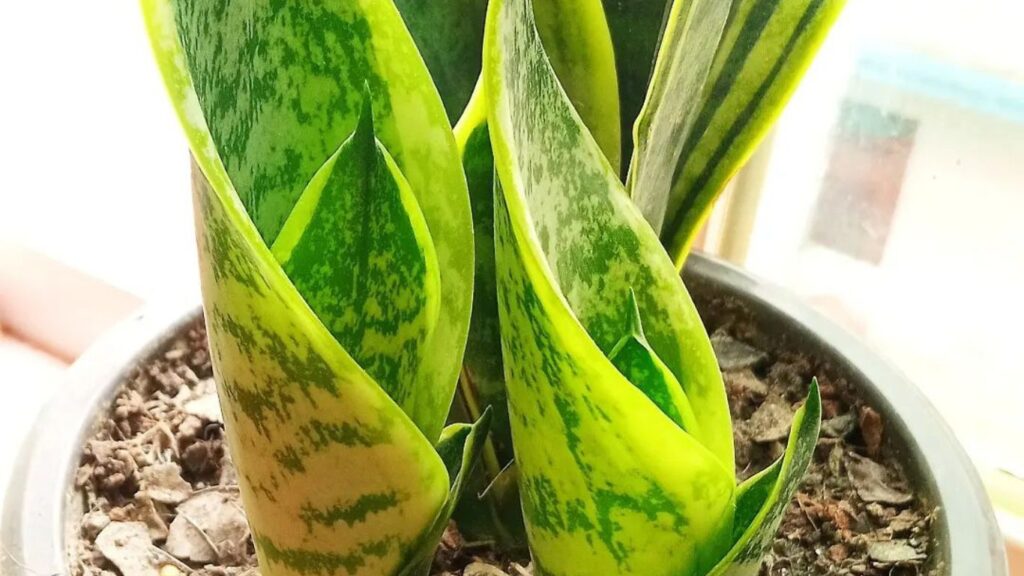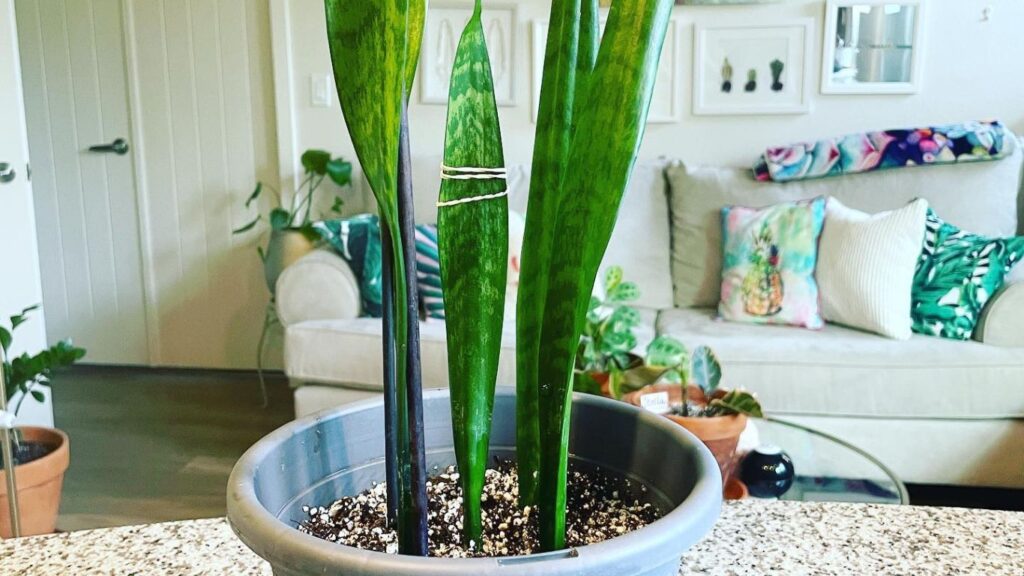The snake plant, also known as Dracaena trifasciata. Snake plant too much water. its, commonly called “mother-in-law’s tongue,” are some popular and versatile houseplants.
One of the most well known and widespread houseplants that exists today. they are incredibly easy to care for, can thrive in almost any situation, and live a long time with minimal attention.
These plants are easy to grow but are extremely sensitive. If the plant is not provided with proper amount of water and sunlight, it can damage the plant.
Overwatering is becoming very common on snake plants. Overwatering will cause leaves to turn yellow and shriveled. If the situation is not dealt with, the tree will slowly die.
The season, temperature, and plant location affect a snake plant’s watering schedule. Snake plant too much water, Here’s everything you need to know about keeping this tropical plant hydrated.
We will discuss, the symptoms of an overwatered snake plant and how you can save it from overwatering!
When to Water Snake Plants

As a general rule of thumb for both indoor and outdoor snake plants, water them when the soil is completely dry. during spring and summer,
Expect to water your snake plant more frequently than during fall and winter due to increased light, warmer temperatures and a more vigorous growth schedule.
For example, you should water your snake plant once a week in the spring and summer and once every two to three weeks in the fall and winter.
If you have year-round temperatures above 55 degrees F and grow snake plants outside, Snake plant too much water and maintain a regular watering schedule based on warmer temperatures.
If you’re not sure if it’s time to water your plant, remember that it’s generally better to keep the snake plant under water than to drown it.
When you water your snake plant, be sure to water it deeply so that the moisture gets down to the roots.
Signs of an Overwatered Snake Plant

Overwatering the snake plant is not a good idea. excess water in plants causes many problems in plant growth and nutrition.
For healthy growth, you need to make sure to take proper care of the snake plant. below we have listed some indicators to identify if your snake plant is suffering from an overwatering problem.
Dropping Leaves on Snake Plants

One of the most common symptoms you will notice in your overwatered snake plant is leaf drop. as the leaves absorb too much water,
They will start to become soft and even mushy and lose their structure, causing them to droop. Despite this, the plant will not show any rot symptoms.
Snake plant too much water Check the potting soil to make sure it’s not too wet. Because then, it will not absorb water properly and will get extremely wet.
The lack of air in the soil causes ammonia to accumulate in the plant tissues. As a result, a part of the branch is dry!
You can detect the symptoms of leaf drop due to two reasons. First of all, wet soil on snake plants indicates that you are overwatering it.
And the second is that if the soil is dry, you can consider other factors such as temperature, potting soil, stress, or even drowning of the snake plant as the cause of the leaf drop.
Snake plant too much water Maintaining the water level in the plant will ensure a steady flow of minerals to the snake plant to avoid such situations.
Falling leaves are not healthy for the plant and if not taken care of soon, it can lead the plant to slow death. Therefore, it is essential to check the water flow of plants.
The tips may die first due to increased water loss in the leaves. The tips of the leaves of the long snake plant will begin to fall off.
The Browning of The Tips Takes Time

Due to damage caused by overwatering, the leaf tip initially receives less water, causing the leaf tips to turn brown and lose its ability to grow, eventually dropping and withering.
By testing the soil moisture, you can determine if the plant is overwatered.
Snake Plant Too Much Water Snake Plant Roots Rot Avoid

Root rot is commonly caused by bacterial and fungal infestations in snake plants. and one of the most common and primary contributors to this happening in a plant is excess water.
Excess water in the soil keeps it damp and attracts bacteria and fungi that damage the roots of the plant causing the snake plant to slowly dry out.
Snake plant roots are white and crusty. If you notice patches of roots turning brown, root rot could be affecting your plant.
You can determine the presence of root rot in a plant by looking for any signs of discoloration on the plant’s leaves or snake plant leaves.
Also, another way to detect root rot in a plant is to smell the soil in which the plant is placed. Snake plant too much water and a foul smelling soil sample indicates the presence of a fungus that grows on the plant while it is wet.
In excess of water to prevent snake plant root rot, it is recommended to cut off the damaged roots, rinse the plant thoroughly with water and replace it with a new potting.
Repotting will help the plant greatly by providing a good and healthy growing environment around it. Also, controlling the water given to the plants is essential.
Snake Plant Leaves Turn Yellow

Another indication that snake plants are over-watered is yellowing of the leaves. Nitrogen can be carried away by excess water as it moves through the soil,
Plants are deficient in nitrogen. Since nitrogen is soluble in water, Snake plant too much water it washes out of the soil quickly.
Moreover, the leaves of the snake plant turn yellow due to nutrient deficiency.
An inability to absorb residual nitrogen in the soil can also be a sign of root rot. Yellow leaves are primarily caused by root rot and excess water.
This is due to decay in that the fungus-infected roots can no longer supply the leaves with the nutrients and water they need from the soil. There are no minerals for the plant to grow.
Squishy Leaves on The Snake Plants

The cell structure of the leaves of snake plants is severely damaged when they absorb excess water. As a result of overwatering, the leaves eventually crack and become floppy, scaly and squishy.
This is one of the most common signs to look for in snake plants to identify Snake plant too much water if the plant is overwatered.
A healthy snake plant is characterized by rigid, green leaves that stand upright from the base of the plant. You can avoid leaf spotting by limiting the plant’s water supply and taking proper care.
Mold in Snake Plants

Wet, spongy soil indicates that the snake plant has been overwatered. As a result of soil moisture and prolonged moisture, surface mold may begin to form.
When white or green mold appears on the surface of the potting soil, it is usually due to the soil being too waterlogged.
Snake plant too much water Snake plant mold can be very harmful to the plant’s development and growth, so if you see any mold growing on the plant, make sure to remove it first.
After that, clean the affected plants with a damp paper towel. If the mold is still present on the plant after cleaning, it is probably still active, so it is best to gently remove the affected material.
Water the plants as soon as the soil dries out and repot after spraying the fungicide. It’s important to maintain a pleasant temperature as soon as possible because heat, light, or lack of air can all encourage the growth of fungus.
How to Save a Watered Snake Plant?

Snake plant too much water and to save an overwatered snake plant, you first need to find the problem that is infecting the plants. The most common problem is root rot which can attract more fungi and bacteria.
Since snake plants are hardy, they can easily recover from overwatering. We have listed some steps below that make repairing a waterlogged snake plant easier.
First: move the plant quickly to a sunny location. Placing snake plants near a window or in a sunny container is essential during their growth as this increases soil dryness.
If you are in the early stages of overwatering, It will be beneficial and easier to use the soil drying process.
Placing the plant in a sunny location is also effective in absorbing moisture to reduce leaf mottling from excess watering. So it is necessary to change the place of snake plant.
Second: Remove Plants. Snake plant too much water remove Then carefully remove the plant from its pot. By lightly stroking the side of the pot,
You can successfully remove the plant by loosening the dirt. Carefully remove your snake plant from the pot to expose the roots after the soil is sufficiently loosened.
Once the plant is out, begin clearing the soil from the roots, but be careful not to damage them in any way.
Thard : Treat Root Rot Then. examine the roots for any signs of fungi that cause root rot. The roots of the affected plants are sticky, smelly and have brown spots inside them.
Examine the plant thoroughly after removing it from the pot. You can treat root rot by following the steps we have mentioned below:
Wash off the excess dirt from the roots. To accurately determine how much damage has been done, it is essential to expose the roots.
Make sure that only healthy roots are left when trimming all affected teeth. If all sources of damage are not eliminated, there is a risk of rot spreading once more.
Snake plant too much water and After removing the unhealthy roots, you can apply a fungicide root ball to prevent the fungus from coming back in the future.
Also, before transplanting the roots into a clean pot with new potting soil, give the roots a few hours to dry out to avoid insect or fungal attack.
Forth: Repotting the plant. Repotting the snake plant in fresh soil is the last step to protect it from overwatering. If the soil is moldy or very damp and squishy, you should take this step.
This is a great idea if the plant turns yellow because the new soil will have a great balance of nutrients including nitrogen. Remove the plant from the pot, then remove any excess soil.
Repot plants using high-quality, new potting soil that is fresh and well drained. Before repotting, its best to wash and sterilize the container which can help remove any mold growth on the container.
After repotting is done, wait a few days for the plant to settle into the ground and then begin watering. Snake plant too much water and Be careful and limit watering snake plants.
How to Repot Snake Plants Step by Step

Gather sanitized tools. Root rake, chopstick, pruner etc. Remove soil around the roots with a root rake. Take the tree out and inspect the level of damage to determine if replanting is necessary.
Even if reporting isn’t necessary, clean the soil from the seat with a chopstick. Soil can build up unnecessary minerals from fertilizers so giving a fresh set of soil is useful.
But be careful when poking with chopsticks, snake plant roots are fragile and can be easily damaged. Cut the affected roots with a pair of scissors.
Balance each root by trimming for fine top growth. Whether it is a new or the same container, cover the drain hole with a mesh. Secure netting with wire.
Position the plant and add more soil to cover any gaps. Play around with the soil with your fingers to remove the air pockets underneath it.
You can also use chopsticks to remove the air pockets. The last would be to water the pot thoroughly, maintaining room temperature and humidity.
Avoid exposing Snake plant too much water and the plant to direct sunlight. Please wait a few weeks for it to be delivered.
How to Water The Snake Plant Properly?
Watering snake plants effectively ensures a healthy and nutritious growth of the plant. You need to keeps the procedure simple and easy.
Also, be sure to always limit watering the plants to avoid any overwatering situations that could damage the plants. Snake plants should be regularly watered at least once a week for good growth.
Water must be poured into a watering can and over the soil until it starts to drip from the pot’s drainage holes. If you put your plant in a pot in a saucer, Snake plant too much water
Make sure it doesn’t sit in water by lifting the pot once or twice a day to drain excess water. make sure the soil is completely dry before you water your plant again.
The snake plant does not require much water to thrive. Below we have mentioned some tips that you can consider when watering snake plants!
Water where the roots of your snake plant are. Water at the soil level and continue to apply water until the entire root ball of the plant is fully absorbed.
Remember that the roots of the snake plant are probably as extensive as the plant itself. If you want to water the plant properly, I’d recommend investing in a soil moisture meter.
Insert the soil moisture meter probe a few inches into the soil before watering. If the top few inches look dry, it’s time to water, if not wait until it dries out.
Try to water your plants in the morning instead of in the evening. Snake plant too much water If you water the plant too much, the soil will dry out.
Snake plants can survive drought, with their only enemies being overwatering and diseases caused by overwatering. if the surface of the soil is dehydrated,
The water may freeze or become blocked and not soak through. The key is to start slowly and gradually soak in fully. Once the top few inches are wet, water will soak in more smoothly.
Never water the plant with tap water. Depending on where you live, your tap water may be high in minerals, particularly fluoride or iron, which are not healthy for snake plants.
These minerals prevent any water from getting into the roots which causes them to dry out. So to avoid this situation don’t use tap water for any indoor plant.
Use filtered or pure water for snake plants. Also, the water should be clean and free of traces of unwanted nutrients that the plants don’t need.
Make sure that the water has a stable floor. As mentioned above, Snake plant too much water overwatering or underwatering can damage plants.
Using a sprayer to water snake plants will be effective for controlled watering. If you decide to move your snake plant, water it a little more often than usual without drowning.
Although you don’t want to injure your snake plant, you need to give it some time to establish roots in a fresh pot of soil.
When selecting the plant and pot size, consider how much you will be watering it. Water the plant to prevent any future damage to it
